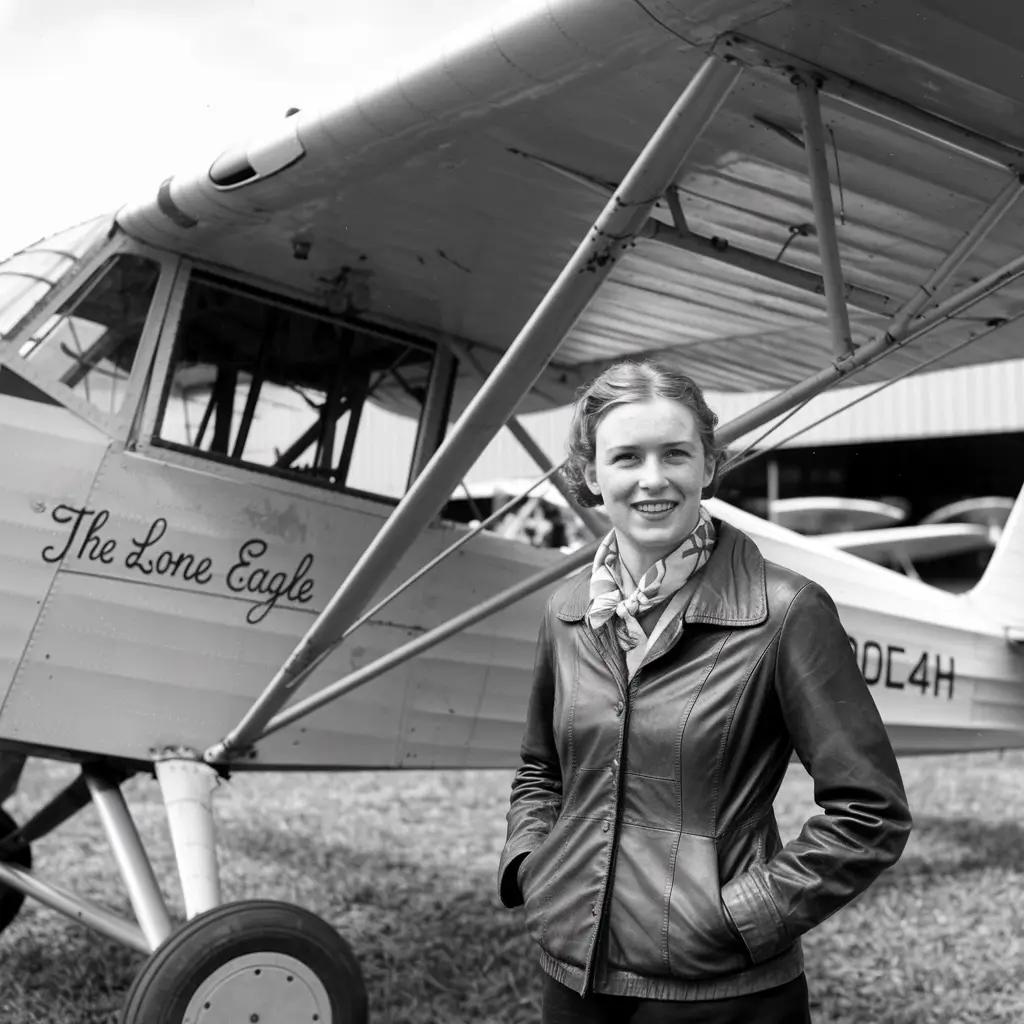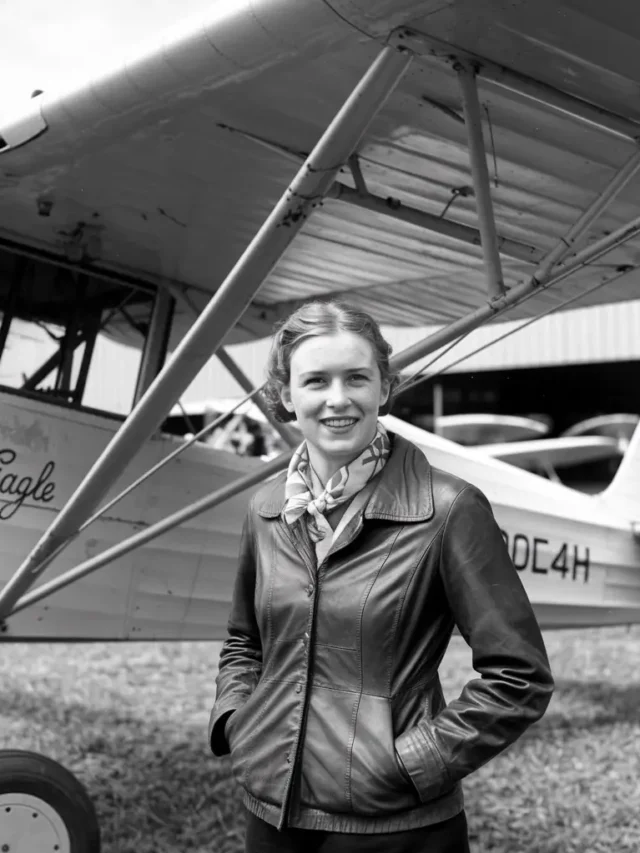Amelia Earhart’s Unparalleled Feat in Aviation
On January 11, 1935, Amelia Earhart made history by completing a daring solo flight from Hawaii to California. This remarkable achievement solidified her status as a pioneer in aviation and a trailblazer for women in a male-dominated field. Covering approximately 2,408 miles across the Pacific Ocean, this was the first-ever solo flight by a pilot on this route, a journey fraught with danger and uncertainty.
Her flight from Honolulu, Hawaii, to Oakland, California, took just over 18 hours, demonstrating her extraordinary skill, courage, and determination.
The Significance of the Hawaii-to-Mainland Flight
The Hawaii-to-mainland flight posed unique challenges. Navigating over a vast expanse of ocean without landmarks required precise calculations and unwavering focus. Earhart’s Lockheed Vega 5B aircraft, though advanced for its time, left little room for error.
This feat not only showcased Earhart’s bravery but also emphasized the growing possibilities of aviation in the early 20th century. Her journey highlighted the potential for air travel to connect distant parts of the world, inspiring confidence in the future of long-distance flights.
Amelia Earhart: Breaking Barriers
Amelia Earhart’s 1935 solo flight was one of many groundbreaking achievements in her illustrious career. Known for being the first woman to fly solo across the Atlantic in 1932, she consistently pushed the boundaries of what was possible in aviation.
Her accomplishments represented a shift in societal norms, proving that women could excel in fields previously reserved for men. As Earhart famously said, “The most effective way to do it, is to do it.”
Challenges Faced During the Journey
Flying solo over the Pacific Ocean was no small feat in 1935. Earhart faced:
- Limited navigation tools: Pilots of her era relied on basic instruments and celestial navigation.
- Unpredictable weather: Turbulence and storms over the Pacific made the route perilous.
- Mechanical risks: With no immediate access to assistance, any engine malfunction could have been catastrophic.
Her success in overcoming these challenges was a testament to her unparalleled skill and composure as a pilot.
Legacy of Amelia Earhart’s Pacific Flight
Earhart’s achievement inspired generations of aviators and adventurers. Her Hawaii-to-mainland flight demonstrated the growing capabilities of aircraft technology and the courage required to push its limits.
More importantly, her legacy transcended aviation. She became a symbol of perseverance, determination, and the pursuit of one’s dreams, inspiring women worldwide to break barriers in all fields.
Honoring Earhart’s Achievements
Today, Amelia Earhart is celebrated not only as an aviation pioneer but also as a cultural icon. Her story is a reminder of the importance of resilience and courage in the face of the unknown.
You can honor her legacy by:
- Learning about aviation history: Explore the advancements in flight since Earhart’s era.
- Encouraging young girls in STEM fields: Support initiatives that inspire women to pursue careers in aviation, engineering, and technology.
- Visiting aviation museums: Many museums feature exhibits dedicated to her life and achievements.
Conclusion – Amelia Earhart Solo Flight 1935
Amelia Earhart’s historic solo flight from Hawaii to California on January 11, 1935, was more than just an aviation milestone; it was a statement of courage and perseverance. Her journey continues to inspire individuals to pursue their dreams and overcome challenges.





order amoxicillin online cheap – amoxicillin without prescription buy generic amoxil online
amoxicillin drug – https://combamoxi.com/ purchase amoxil generic
diflucan drug – https://gpdifluca.com/# fluconazole cheap
cheap fluconazole – buy fluconazole 100mg generic diflucan cost
cenforce 50mg price – https://cenforcers.com/ order cenforce 100mg generic
buy cenforce paypal – https://cenforcers.com/# cenforce price
where to buy generic cialis – https://ciltadgn.com/ best price on generic cialis
best price for tadalafil – https://ciltadgn.com/# cialis experience
cialis drug – tadalafil liquid fda approval date cialis online no prescription australia
san antonio cialis doctor – https://strongtadafl.com/ what is tadalafil made from
order ranitidine 150mg – https://aranitidine.com/# buy ranitidine 300mg generic
buy ranitidine 300mg pill – buy generic zantac over the counter order ranitidine 300mg online
viagra online order no prescription – https://strongvpls.com/# how to order viagra online
buy viagra without prescriptions – on this site cheap herbal viagra pills
Thanks on putting this up. It’s understandably done. https://gnolvade.com/
More posts like this would make the blogosphere more useful. https://gnolvade.com/es/fildena/
This is the kind of serenity I take advantage of reading. https://buyfastonl.com/furosemide.html
More posts like this would persuade the online elbow-room more useful. cost zithromax
This website positively has all of the information and facts I needed to this thesis and didn’t identify who to ask. https://ursxdol.com/augmentin-amoxiclav-pill/
More posts like this would persuade the online elbow-room more useful. ursxdol.com
More delight pieces like this would create the интернет better. https://prohnrg.com/product/orlistat-pills-di/
More posts like this would make the online time more useful. https://prohnrg.com/product/diltiazem-online/
I’ll certainly bring back to read more. https://aranitidine.com/fr/acheter-propecia-en-ligne/
I couldn’t resist commenting. Well written! https://ondactone.com/simvastatin/
This is the tolerant of advise I turn up helpful. https://ondactone.com/product/domperidone/
I am in fact thrilled to coup d’oeil at this blog posts which consists of tons of useful facts, thanks towards providing such data.
https://doxycyclinege.com/pro/metoclopramide/
More posts like this would create the online play more useful.
https://doxycyclinege.com/pro/losartan/
I couldn’t resist commenting. Well written! http://wightsupport.com/forum/member.php?action=profile&uid=21300
The thoroughness in this draft is noteworthy. http://ledyardmachine.com/forum/User-Lzvpam
dapagliflozin 10mg pills – https://janozin.com/ buy forxiga cheap
buy dapagliflozin online – janozin.com dapagliflozin pills
buy generic orlistat – buy xenical pills order xenical 60mg sale
order orlistat without prescription – click xenical pills
Thanks towards putting this up. It’s evidently done. https://myrsporta.ru/forums/users/dewdm-2/
I am in truth enchant‚e ‘ to glance at this blog posts which consists of tons of profitable facts, thanks representing providing such data. http://mi.minfish.com/home.php?mod=space&uid=1421091
Your article helped me a lot, is there any more related content? Thanks! binance Norādījuma kods